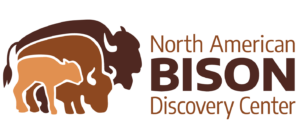The National Buffalo Museum welcomed a new addition to its herd in December. Boyd Meyer, owner of Cold Creek Buffalo Company in Cheyenne, WY, donated a 20-month-old bison bull, who has since been named Moose. Ilana Xinos, the museum’s Executive Director, said, “We are honored to receive this generous donation from Cold Creek Buffalo Company. Boyd is an active member of the museum and his support is truly appreciated.”
In an interesting twist of fate, Moose is a direct descendant of Leo, the museum’s very first herd bull who went on to become an influential herd sire at the Slim Buttes Buffalo Ranch in South Dakota. Leo is an important animal in that his genetics have played a pivotal role in setting the standard for seed stock in the modern bison industry. Leo’s genetics were instrumental in developing the breeding program at the ranch, which is well known for producing some of the highest quality bison breeding stock in the US.
Moose was part of the Dakota Territory Buffalo Association’s Young Guns Performance Tested Yearling Bull Challenge, a prestigious bison breeding bull competition. Ranchers from the US and Canada bring in their best breeding bull prospects to be raised on a neutral host ranch. Data is collected on each bull to determine Average Daily Gain ability on grass and on a feed ration. Moose was one of the bulls who gained the most on a grass diet. Cold Creek Buffalo Company, one of the industry’s leading ranches, has
been entering bulls into this competition for nearly a decade, consistently placing in the top tier of the class.
Selecting breeding animals is an important decision that bison ranchers must make. It is important to select breeding bulls with correct conformation, which refers to the animal’s skeletal and muscular structure. Kevin Leier, a bison rancher in Rugby, North Dakota, and Region 3 Director of the National Bison Association explains, “Correct structural conformation perpetuates the characteristics of bison that ranchers strive to keep intact, including easy calving ability, longevity in breeding, athletic ability, and overall integrity of the species.”
“Modeling best practices in bison ranching is one way in which the museum works to achieve its mission, explains Xinos. “Having a well-respected producer donate a bull of this caliber to the museum’s herd speaks to the fact that our organization is moving in the right direction. Moose has correct confirmation, and superior genetics. He introduces genetic diversity into the museum’s herd, while also serving as a link to its genetic past. We couldn’t be more thrilled to have him join our herd.”



